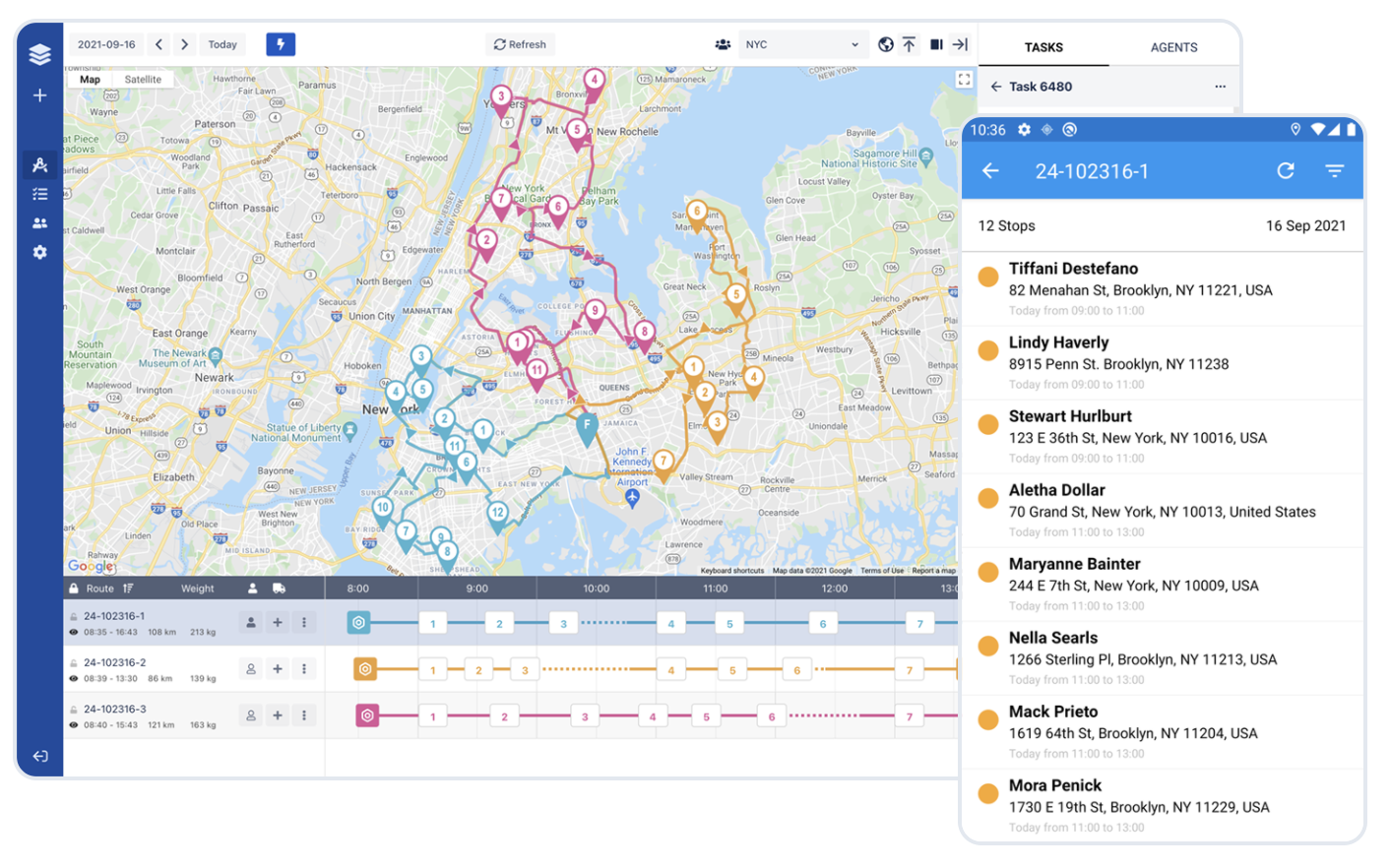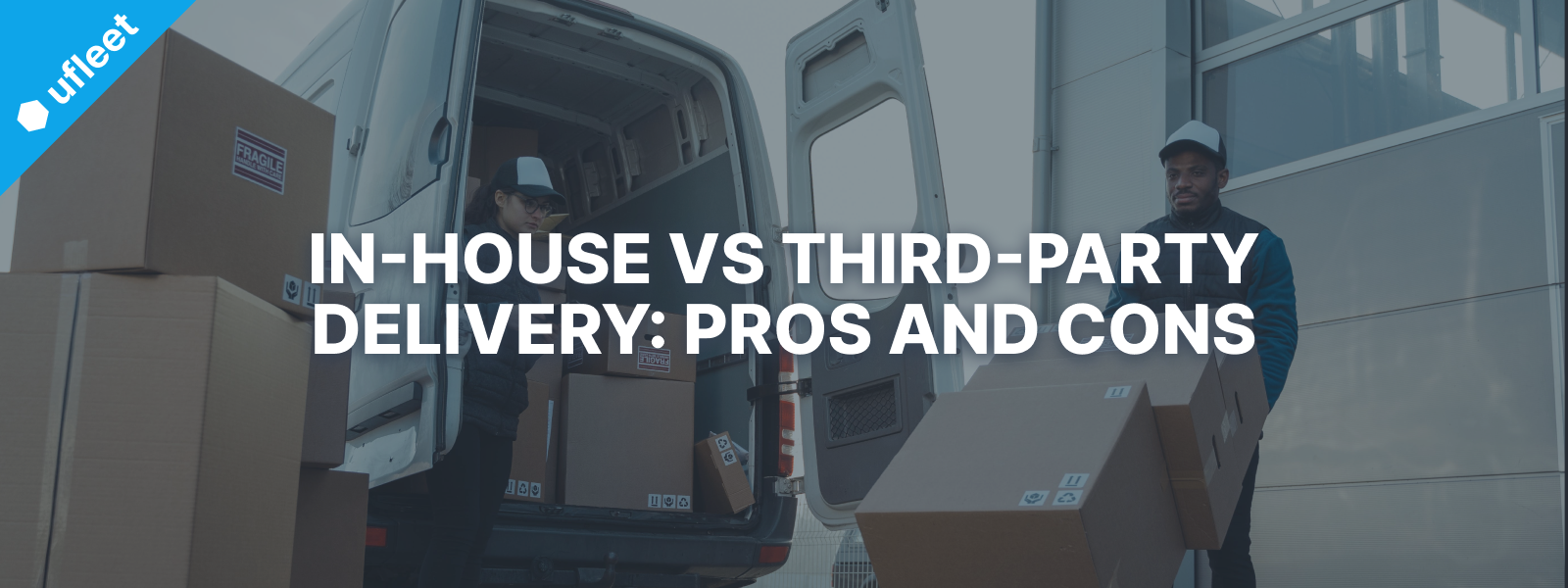Route optimization, eco-friendly packaging, and alternative delivery methods are key to achieving sustainable delivery.

Shopping online is the new norm. With its popularity, the environmental impact of deliveries grows too.
Currently, last mile delivery produces 41% of global carbon emissions in the logistics sector.
The MIT Center for Transportation and Logistics found another concerning correlation. Every $10M spent on shipping generates approximately 232 metric tons of greenhouse gas emissions.
This is a lot.
To put it in perspective, it is equivalent to burning 129,000 pounds of coal or 14,000 gallons of gasoline.
These alarming statistics call for immediate action from online retailers and consumers.
Find below a few ideas that will help you reduce carbon emissions in last mile delivery.
1. Optimize your delivery routes
One of the most effective ways to reduce carbon emissions in last mile delivery is to optimize delivery routes.
Retailers can do this manually or with software. The first option is reasonable only with small volume. In any other case, relying on a delivery software is a must.
Route optimization software analyzes various factors to determine the most efficient routes. Examples include delivery windows, delivery sequences, and the number of deliveries per day.
The results are less mileage and less fuel consumption. The optimization process can reduce fuel use by up to 40% and greenhouse gas emissions by up to 15%.
Besides reducing carbon emissions, it also decreases delivery costs.
At Ufleet, we optimize delivery routes for retailers since 2016. We’ve helped 1000+ businesses reduce their carbon footprint.
If you’re curious about how much CO2 emission you can save with Ufleet, check out our calculator. Also, get in touch — we’d be happy to chat.
2. Implement sustainable delivery fleet
Consider using electric delivery vehicles or bicycles for urban deliveries.
This move not only aligns with environmental goals but also builds a positive brand image. Consumers increasingly prioritize eco-friendly shopping and this is a great opportunity to align with their preferences.
Electric vehicles offer a zero-emission alternative to traditional fuel-powered fleets. They can also benefit from free parking in certain areas.
Bicycles, on the other hand, present a carbon neutral, cost-effective option for last-mile deliveries, especially in dense urban areas.
Moreover, retailers can tap into government incentives, tax credits, and grants designed to promote sustainable transportation. Ultimately, this can unlock financial benefits beyond just fuel savings.
3. Rethink product packaging
We’re moving towards an era of sustainability and environmentally conscious practices. Retailers can make a huge difference by reducing packaging waste.
Product packaging is often too much. Try getting rid of unnecessary elements where possible. Use smaller packages that are appropriately sized for the products.
This way, you can reduce material waste. In addition, you might be able to fit more packages into a fleet.
LUSH is a great example here. The British cosmetics company limits their packaging to a minimum. This includes sending solid products straight into a box without additional packaging.
Consider eco-friendly packaging options too. Biodegradable and recycled materials are an excellent choice.
4. Partner with sustainable courier services
Another option to reduce carbon emissions is to partner with local delivery services that have strong commitment to sustainability.
Look for couriers that use electric or hybrid vehicles. Another popular practice nowadays is some kind of carbon offset program.
Finding sustainable courier services may be challenging, depending on your location. Research and connect with local green delivery companies or explore partnerships with eco-conscious startups.
An innovative example is HIVED — a fully electric delivery service. Currently available in the UK. Big courier companies like DHL and UPS also offer green delivery options.
5. Choose alternative delivery methods
You could encourage customers to pick up their orders at designated locations. This way, you reduce the number of individual deliveries.
Another emerging trend in sustainable delivery is the use of drones and autonomous delivery vehicles. It helps to reduce CO2 emissions and reduce last mile costs too.
These technologies are in their early stages. However, they have the potential to revolutionize last mile delivery. Robots and drones can significantly reduce the need for large vehicles and optimizing routes even further.
6. Consolidate first and middle mile deliveries
In first and middle mile logistics, consolidated delivery bundles multiple packages into one container. It not only helps reduce carbon emissions but also saves money on fuel costs.
The combined shipments reach the final destination and get deconsolidated there. Then, local couriers take them for last mile delivery. Consolidated international shipping is cost-effective and environmentally friendly, minimizing its impact.
Incentives for customers such as free shipping or discounted prices, can encourage them to choose this eco-friendly option.
7. Involve customers in your eco-friendly practices
Online retailers have an influential role in encouraging customers to make greener choices.
Educate your audience about the environmental impact of packaging and the benefits of eco-friendly options.
Offer incentives for choosing eco-friendly materials or provide the option to opt-out of excessive packaging.
Communicate your eco-friendly initiatives to customers. Include information about your sustainable materials on product pages.
This way, you not only raise awareness but also establish trust and loyalty.
Key takeaways
Retailers have a crucial role to play in reducing the carbon footprint of their deliveries.
Route optimization, eco-friendly packaging, and alternative delivery methods are key to becoming a sustainable retailer. In addition, businesses can encourage their customers to pick greener packaging and delivery options.
Last but not least, consolidated shipments and choosing eco-conscious delivery partners can significantly reduce their CO2 footprint. By taking these steps, businesses can make an impact and build a positive brand image.
If you enjoyed this article, subscribe below and you’ll get more like this each month.
Never miss a post
You may also like…
You too can reduce costs and improve efficiency with Ufleet
- plan and optimize delivery routes
- manage and empower drivers
- enhance customer experience
- make data-driven business decisions
We’d love to learn about your challenges.
Leave your email and we’ll get back to you.




